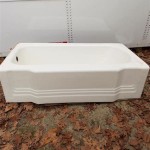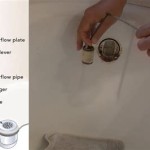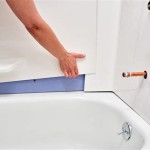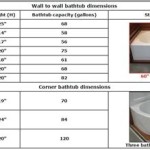Essential Aspects of Turning Bathtub Into Walk In Shower
Remodeling a bathroom to include a walk-in shower provides numerous benefits, including improved accessibility and a more modern aesthetic. If you're considering converting your bathtub into a walk-in shower, there are several essential aspects to consider to ensure a successful project.
1. Accessibility and Safety
Walk-in showers are ideal for individuals with limited mobility or seniors who require a more accessible bathing solution. They provide a safe and convenient way to bathe without the risk of slipping or falling. Additionally, adding grab bars, a shower seat, and a handheld showerhead can further enhance safety and functionality.
2. Space Planning
The size and layout of your bathroom will determine the feasibility of converting your bathtub into a walk-in shower. Ensure that there is adequate space for a walk-in shower without compromising the functionality of other bathroom fixtures. Consider the location of the showerhead, plumbing, and access to the shower area.
3. Plumbing and Drainage
Converting a bathtub to a walk-in shower requires careful attention to plumbing and drainage. The existing drain may need to be repositioned or extended to accommodate the new shower base. The showerhead and plumbing fixtures must be properly installed to prevent leaks and ensure proper water flow.
4. Shower Base and Walls
Choose a shower base made of durable and slip-resistant materials such as acrylic, fiberglass, or tile. The walls of the shower area should be waterproofed and can be tiled, painted, or lined with shower panels. Proper ventilation is also crucial to prevent moisture buildup and mold growth.
5. Lighting and Ventilation
Adequate lighting is essential for safety and comfort while using the shower. Consider installing recessed lighting or waterproof pendant lights. Ventilation is equally important to remove moisture and prevent fogging. A bathroom fan or exhaust system will help circulate air and prevent condensation.
By carefully considering these essential aspects, you can transform your bathtub into a functional and accessible walk-in shower that enhances the safety, functionality, and aesthetic appeal of your bathroom.

Master Bathroom Renovation Converting A Bathtub Into Walk In Shower Our Handcrafted Life

The Pros And Cons Of Converting A Standard Tub Into Walk In Shower Naperville

Bathtub To Shower Conversion Safe Bathroom For Seniors

How To Convert A Tub Into Walk In Shower Budget Dumpster

7 Tricks To Turn A Tub Into Walk In Shower

Tub To Shower Conversion Virginia Beach Va Affordable Installation

Master Bathroom Renovation Converting A Bathtub Into Walk In Shower Our Handcrafted Life

How To Convert A Tub Walk In Shower Diy Guide

Bathtub To Shower Conversion Safe Bathroom For Seniors

7 Bathtub To Shower Conversions That Add Style Space Sweeten Com








